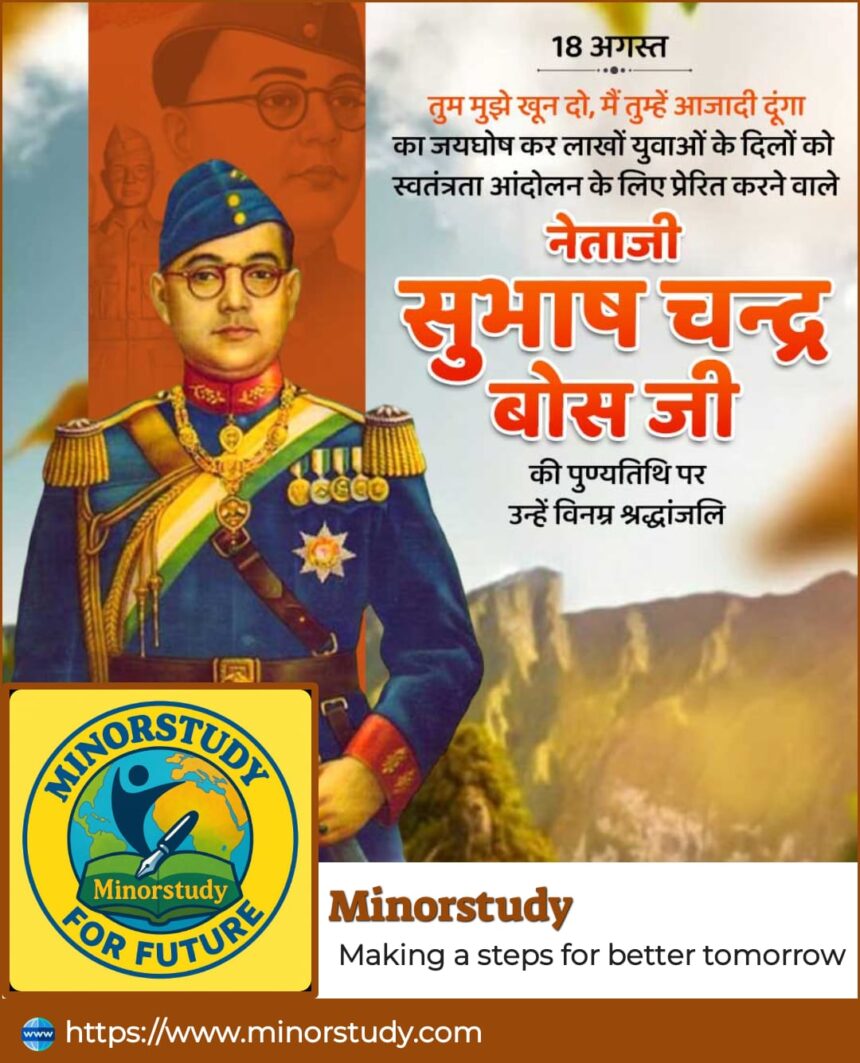Truths About Netaji Subhash Chandra Bose That Will Inspire Every Indian
Introduction
In the heart of India’s freedom struggle, few names shine as brightly and as passionately as Netaji Subhash Chandra Bose. Revered as a fearless patriot, an uncompromising leader, and a symbol of selfless sacrifice, Bose was not just a freedom fighter—he was an idea, a movement, and a revolution in himself. His famous call “Give me blood, and I shall give you freedom!” still echoes in the collective memory of India.
- Introduction
- History of Netaji Subhash Chandra Bose
- Important Facts About Netaji Subhash Chandra Bose
- Timeline of Netaji Subhash Chandra Bose’s Life
- Significance of Netaji Subhash Chandra Bose
- Observance of Netaji’s Legacy
- Wishing on Netaji Jayanti (Parakram Diwas)
- Importance of Netaji in Our Life and Society
- FAQs About Netaji Subhash Chandra Bose
- Conclusion – Netaji’s Impact on Daily Life
Netaji’s life was marked by courage, vision, and an unyielding determination to see his motherland free from colonial chains. Unlike many of his contemporaries, he believed that armed struggle, coupled with strategic alliances, was necessary to end British imperialism. His legacy continues to inspire generations, reminding us that true freedom requires not just desire but also sacrifice and relentless effort.
This article explores the history, facts, timeline, significance, observance, daily life impact, and FAQs about Netaji Subhash Chandra Bose, in a human-friendly and engaging manner.
History of Netaji Subhash Chandra Bose
Birth and Early Life: Subhash Chandra Bose was born on 23rd January 1897 in Cuttack, Odisha, into a well-to-do Bengali family. His father, Janakinath Bose, was a renowned lawyer. From a young age, Bose was deeply inclined toward philosophy, nationalism, and leadership.
Education: He studied at the Presidency College and later at Cambridge University in England. He also passed the prestigious Indian Civil Services (ICS) examination but resigned, stating that he could not serve a colonial government that enslaved his own people.
Political Rise: On returning to India, Bose joined the Indian National Congress and quickly became a powerful voice among young nationalists. However, his radical stance often clashed with the moderate approach of leaders like Mahatma Gandhi.
Indian National Army (INA): During World War II, Bose sought help from Germany and Japan to build an armed resistance against British rule. This led to the formation of the Azad Hind Fauj (INA), which became a symbol of militant nationalism.
Mysterious Disappearance: In August 1945, Bose is believed to have died in a plane crash in Taiwan, though controversies and conspiracy theories continue to surround his death, with many Indians believing he lived beyond that date.
Important Facts About Netaji Subhash Chandra Bose
He was called “Netaji” (Respected Leader) by German and Indian soldiers.
He founded the Forward Bloc in 1939 after breaking away from the Congress due to ideological differences.
The Azad Hind Government, established by him in 1943, was recognized by 11 countries, including Japan, Germany, and Italy.
Bose’s INA included men and women, with the Rani Jhansi Regiment being the first all-women regiment in modern military history.
He was deeply influenced by Swami Vivekananda and his teachings of nationalism and service.
Netaji’s political slogan “Jai Hind” later became India’s national salutation.
Despite ideological clashes, Gandhi admired Bose and referred to him as the “Prince among patriots.”
He was imprisoned 11 times by the British between 1921 and 1941.
His disappearance in 1945 remains one of India’s greatest unsolved mysteries.
The Netaji Subhash Chandra Bose International Airport in Kolkata is named in his honor.
Timeline of Netaji Subhash Chandra Bose’s Life
1897 – Born in Cuttack, Odisha.
1919 – Passed ICS examination but resigned.
1921 – Joined Indian National Congress.
1938 – Became Congress President at Haripura Session.
1939 – Resigned from Congress; formed Forward Bloc.
1941 – Escaped house arrest in Kolkata; traveled secretly to Germany.
1942–43 – Raised the INA with Japanese support.
1943 – Declared Provisional Government of Free India in Singapore.
1944 – INA fought along with Japanese forces in the Imphal and Kohima battles.
1945 – Allegedly died in an air crash in Taiwan on 18th August.
Significance of Netaji Subhash Chandra Bose
Netaji’s significance lies not only in his leadership but also in the psychological revolution he brought to the freedom struggle:
He inspired Indians to believe that independence could be achieved through bold action, not just negotiations.
His INA, though militarily unsuccessful, shook the morale of the British Raj.
He internationalized India’s freedom struggle by securing recognition abroad.
Netaji stood for unity beyond caste, creed, or religion, proving that patriotism was the ultimate bond.
His call for sacrifice laid the foundation for India’s eventual independence in 1947.
Observance of Netaji’s Legacy
Netaji Jayanti: Celebrated every year on 23rd January as Parakram Diwas (Day of Courage).
Schools, colleges, and organizations conduct patriotic events, speeches, and cultural programs.
Government and military institutions honor him through memorials and tributes.
Streets, airports, and institutions across India are named after him.
In 2022, a grand statue of Netaji was unveiled near India Gate, New Delhi, symbolizing eternal respect.
Wishing on Netaji Jayanti (Parakram Diwas)
If you wish to greet someone on this occasion, you can say:
“On Netaji Jayanti, let us remember the courage and sacrifice of Subhash Chandra Bose. Jai Hind!”
“Wishing you Parakram Diwas filled with inspiration and patriotism.”
“May we follow Netaji’s path of dedication and love for the nation.”
Importance of Netaji in Our Life and Society
Inspiration for Youth: Netaji teaches that discipline, courage, and willpower can achieve the impossible.
Patriotism as a Way of Life: His life inspires us to put our nation above self-interest.
Unity in Diversity: His vision transcended religion and caste, reminding us of national unity.
Women Empowerment: By forming the Rani Jhansi Regiment, he proved women’s equal capability in nation-building.
Global Outlook: Netaji showed that international alliances are crucial for progress, a lesson still relevant today.
FAQs About Netaji Subhash Chandra Bose
Q1. Why is Subhash Chandra Bose called Netaji?
He was given the title “Netaji” (Respected Leader) by Indian soldiers in Germany.
Q2. What was the aim of the INA?
The INA aimed to overthrow British rule in India with armed struggle.
Q3. Did Bose clash with Gandhi?
Yes, though they shared mutual respect, Bose believed in armed struggle while Gandhi advocated non-violence.
Q4. Is Bose’s death confirmed?
Officially, he is believed to have died in a plane crash in 1945, but many theories suggest otherwise.
Q5. What is Parakram Diwas?
Parakram Diwas is the celebration of Netaji’s birth anniversary on 23rd January, recognizing his courage.
Conclusion – Netaji’s Impact on Daily Life
Netaji Subhash Chandra Bose was not just a freedom fighter but also a symbol of fearless action, unity, and sacrifice. His ideology reminds us that freedom is precious and must be protected at all costs. In daily life, his teachings inspire us to be disciplined, patriotic, and selfless. Whether it’s in education, leadership, or social service, Bose’s vision of a strong and united India continues to guide us.
In society, he remains a bridge between generations—the youth look up to him as a role model, while the elderly recall him as a revolutionary who gave everything for the nation.
His timeless words, “Jai Hind,” remain more than just a slogan—they are a way of life.








